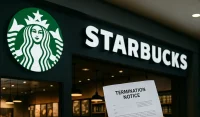Imagine landing your dream job not through a polished CV or a nerve-wracking interview, but via a 60-second TikTok video showcasing your creativity and passion. Welcome to the evolving world of recruitment, where US companies are increasingly turning to TikTok to connect with potential employees.
In this article, we’ll delve into why TikTok has become a go-to platform for hiring in the US, exploring the benefits, challenges, and real-life examples of this innovative approach.
The Rise of TikTok in Recruitment
TikTok, initially known for dance challenges and viral trends, has evolved into a multifaceted platform influencing various sectors, including recruitment. With over 1 billion active users worldwide, its reach is undeniable.
The platform’s algorithm promotes content based on engagement rather than follower count, allowing job seekers and employers to connect organically. Hashtags like #CareerTok and #JobTips have garnered millions of views, indicating a growing interest in career-related content on TikTok.
Why US Companies Are Embracing TikTok for Hiring
1. Connecting with Gen Z
Generation Z, born between 1997 and 2012, is entering the workforce in large numbers. This demographic values authenticity, creativity, and digital engagement. TikTok offers a medium that resonates with these values, making it an effective tool for employers aiming to attract young talent.
A survey revealed that 46% of Gen Z individuals have secured jobs or internships through TikTok, highlighting the platform’s impact on modern job searches.
2. Showcasing Company Culture
Traditional job postings often fail to convey a company’s culture effectively. TikTok allows companies to create engaging content that showcases their work environment, team dynamics, and values. This transparency helps candidates assess cultural fit before applying.
3. Innovative Recruitment Campaigns
Companies like Hilton have experimented with accepting TikTok videos as job applications, blending technology with traditional hiring practices. Such initiatives not only streamline the application process but also attract candidates who are adept at digital communication.

Common Pitfalls and Misconceptions
1. Perception of Unprofessionalism
Some critics argue that TikTok’s informal nature may undermine the professionalism of the recruitment process. However, the platform’s emphasis on creativity and authenticity can complement traditional hiring methods when used appropriately.
2. Limited Reach
While TikTok is popular among younger demographics, it may not be as effective for roles targeting older or less tech-savvy candidates. Employers should consider their target audience when integrating TikTok into their recruitment strategy.
3. Content Oversaturation
With the vast amount of content on TikTok, there’s a risk of job postings getting lost in the noise. Employers need to craft compelling and unique content to stand out and attract the right candidates.

Real-Life Examples and Case Studies
1. Chipotle’s TikTok Recruitment
Chipotle leveraged TikTok to launch the #ChipotleCreator challenge, encouraging users to showcase their culinary skills. The campaign not only boosted brand engagement but also attracted potential employees passionate about food and creativity.
2. The Washington Post’s Digital Expansion
The Washington Post embraced TikTok to reach younger audiences, sharing behind-the-scenes content and news in a digestible format. This approach humanized the brand and opened avenues for attracting digitally savvy talent.
3. Hollister’s Influencer Collaboration
Hollister partnered with influencers to promote job openings, tapping into their follower base to reach potential candidates. This strategy combined influencer marketing with recruitment, expanding the company’s reach.
How to Create a TikTok Resume That Stands Out
TikTok resumes aren’t just a gimmick—they’re a bold new approach to job applications, especially for Gen Z candidates who want to showcase their personality, creativity, and communication skills. The format is ideal for roles in marketing, sales, hospitality, media, and other people-facing industries.
Key Tips for Building a Strong TikTok Resume
Start with a hook
The first three seconds are critical. Begin your video with a direct, confident statement such as, “Here’s why I’d be a great fit for your team” or “Let me show you how I turned five years of customer service into sales success.”
Keep it short, clear, and impactful
While TikTok allows up to 3 minutes of video, 30 to 60 seconds is ideal. Use captions or on-screen text to highlight key points like your job title, skills, and achievements.
Show, don’t tell
Instead of listing skills, demonstrate them. If you’re a designer, flash examples of your work. If you’re in customer service, share a story about resolving a difficult client situation.
Be professional, but be yourself
TikTok is casual, but it’s still a professional interaction. Dress appropriately for the role, speak clearly, and avoid excessive slang or inside jokes.
Use the right hashtags
Hashtags such as #CareerTok, #JobSearchTips, #TikTokResume, and #HireMe are not just trendy—they help your video reach recruiters who are actively sourcing candidates.
This format may not replace the traditional resume entirely, but it’s becoming a powerful supplementary tool—especially for standing out in crowded entry-level markets.

The Psychology Behind TikTok’s Hiring Power
At the core of TikTok’s effectiveness in recruitment is human psychology. The platform appeals to innate behaviours in ways that static job boards simply can’t match.
Micro-attention, macro engagement
Attention spans are shrinking. According to research from Microsoft, the average human attention span is now about 8 seconds. TikTok’s short-form content plays directly into this shift, capturing users with dynamic, fast-paced videos that often say more in 30 seconds than a CV does in two pages.
Visual trust and emotional connection
Videos create faster emotional engagement. Seeing a candidate speak, smile, or express themselves on video allows recruiters to form an impression more quickly—and often more accurately—than reading static text.
This works both ways: job seekers get a clearer sense of the company’s tone, vibe, and values through employer-branded TikToks than through generic job descriptions.
Authenticity over polish
Gen Z values honesty and relatability. TikTok rewards content that feels real and unfiltered. This means candidates don’t need to stress over studio-quality production—they just need to communicate clearly and confidently.
For recruiters, this allows for a more natural, unscripted view of who the candidate is beyond their resume.
Best Industries Using TikTok for Recruitment
While TikTok may not be ideal for every job sector, it shines in industries where personality, presentation, and visual storytelling are crucial. These sectors are leading the way in TikTok-driven hiring:
| Industry | Why It Works | Examples |
| Retail & Hospitality | Customer-facing roles benefit from personality, energy, and soft skills | Chipotle, Starbucks, Dunkin’ |
| Creative & Marketing | Candidates can show portfolios, creativity, and media literacy | Freelancers, digital agencies |
| Tech & Startups | Brands often need to project modern, innovative culture | Canva, Shopify, Squarespace |
| Fitness & Wellness | High-energy roles that benefit from on-camera charisma | F45, Gymshark, Barry’s Bootcamp |
| Media & Journalism | Demonstrations of storytelling, reporting, and editing skills | The Washington Post, NowThis News |
These industries thrive on dynamism, making TikTok a natural fit. They also tend to attract younger candidates who already use the platform for entertainment and education.
Hiring? Post jobs for free with WhatJobs
Funniest and Weirdest TikTok Job Applications (That Actually Worked)
One of the more unexpected outcomes of TikTok resumes is their ability to go viral—not just for job-seeking impact, but for entertainment value too. The following real-life examples prove that a little humour and ingenuity can lead to real-world opportunities.
1. The Resume Rapper
A marketing hopeful in New York turned his qualifications into a rap video, complete with clever rhymes, branding references, and a call-to-action: “Hire me.” The video went viral with over 2 million views and caught the attention of four different employers.
2. The Illustrator Storyboard CV
A design student created a TikTok showing her “drawing” each skill from her CV, using animated illustrations instead of a bullet list. The video was picked up by recruiters at Pixar, and she landed a remote internship.
3. The Cleaning Spy Skit
A young man applying for a janitorial role filmed a skit of himself “secretly” tidying an office while narrating all the ways he improves efficiency. It was equal parts James Bond spoof and operations pitch—and it got him hired on the spot.
4. The Duet Challenge CV
Some companies ran hiring challenges asking users to “duet” their videos to apply. One particularly inventive applicant created a call-and-response performance to the recruiter’s original post—and was invited for an interview the next day.
These stories show that creativity, when paired with genuine value, can get applicants noticed in an otherwise oversaturated job market.
Need Career Advice? Get employment skills advice at all levels of your career
AI and TikTok: The Future of Video-Based Hiring?
As video hiring gains traction, artificial intelligence is quickly becoming a game-changer in how employers review, shortlist, and even interact with TikTok-based applications.
AI in candidate screening
Companies are starting to deploy video analysis tools to identify traits such as enthusiasm, clarity, emotional tone, and even facial expressions. Tools like HireVue and MyInterview already use AI to evaluate video responses for behavioural cues and communication styles.
When paired with TikTok videos, these systems could one day auto-flag promising candidates based on subtle markers like language usage or body language.
Automated job-matching
TikTok’s own algorithm suggests content based on user behaviour. Imagine integrating this with job-matching systems—candidates could be shown relevant jobs based on the content they create or interact with, and employers could be suggested users who fit their ideal profile.
Ethical implications
While this is exciting, it raises important ethical questions:
- How do we ensure AI doesn’t reinforce bias?
- Are applicants being judged fairly on visual cues?
- What safeguards exist around data privacy and consent?
Transparency, fairness, and inclusivity will need to be at the core of any AI-driven recruitment on TikTok or elsewhere.
External References and Further Reading
- Zety’s 2025 Gen Z Career Trends Report
- Recruiter.co.uk on TikTok’s Role in Recruitment
- HR Dive’s Insights on TikTok for Recruiters
Final Thoughts
TikTok’s emergence as a recruitment tool reflects the broader digital transformation in hiring practices. By embracing platforms that resonate with younger demographics, US companies can tap into a vast pool of talent, foster authentic connections, and stay ahead in the competitive job market.
For those exploring unconventional job opportunities or seeking to understand modern recruitment trends, platforms like WhatJobs offer valuable insights and resources.




